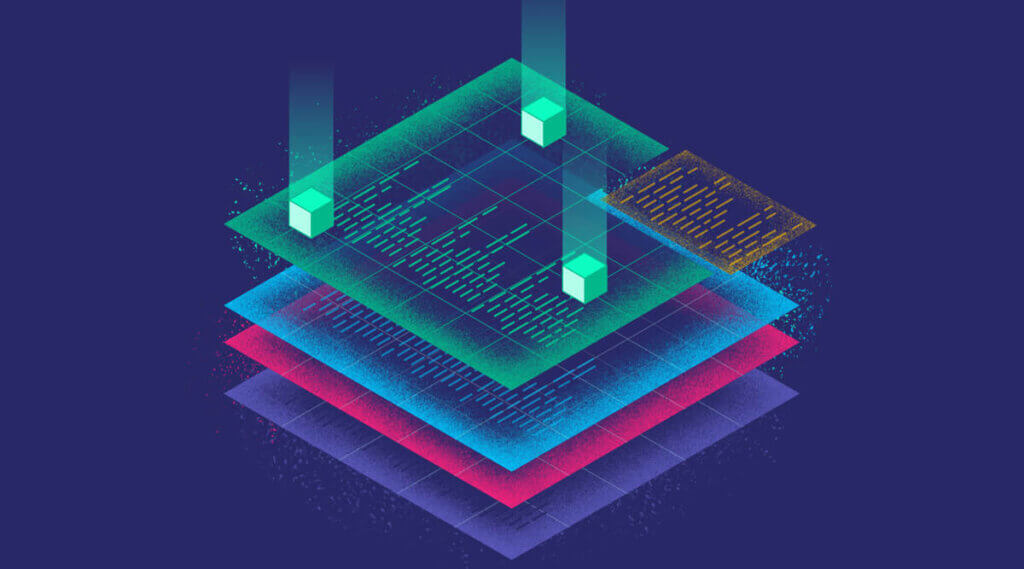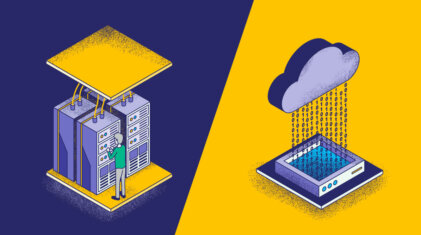Cloud services were born at the beginning of 2000 with companies such as Salesforce and Amazon paving the way. Simple Queuing Service (SQS) was the first service to be launched by Amazon Web Services in November 2004. It was offered as a distributed queuing service and it is still one of the most popular services in AWS. By 2006 more and more services were added to the offering list.
Almost 20 years later, Infrastructure as Code (IaC) emerged as a process to manage and provision cloud services, virtual machines, bare metal servers, and other configuration resources. Coding, as opposed to the usual clicking on the dashboard of the selected cloud provider, is now the preferred way of provisioning these resources. Treating infrastructure as code and using the same tools as in software application development appealed to the developers due to the efficiency of the building, deploying and monitoring applications and their infrastructure.
IaC has improved editing and distributing the infrastructure code files, as well as ensuring that the same configuration is shared across different environments without discrepancies between them. IaC files are also used for official infrastructure documentation. Some tools translate these files and produce architectural diagrams. Cloudformation Designer is a great example that comes as part of AWS Cloudformation service. Draw.io (with its Visual Studio Code integration) and Brainboard can also support the design of your IaC documentation.
Another important advantage is version control. The infrastructure files can now be committed and pushed to your favourite Control Version System (CVS), such as Git. As a result of IaC, development teams can integrate the infrastructure files in CI/CD pipelines and automate deploying the required servers, security groups, databases, and other cloud resources required for the goal architecture! This article provides an IaC introduction, explains the difference between Declarative versus Imperative approaches in IaC, discusses the benefits of IaC, where relevant tools are also listed, and finally speaks about IaC, DevOps and CI/CD.
Declarative vs. imperative approaches to IaC
Declarative or imperative are the two approaches for executing your Infrastructure as Code files. Both terms result in providing a set of instructions to the existing platform. Imperative systems are closer to the way our brain thinks and therefore it’s a set of commands that needs to be executed to achieve the final stage/goal. Programming languages, such as Java, Python, and .NET follow this approach too. Building tools, such as Chef and partially Ansible follow the imperative approach.
On the other hand, the declarative approach defines the desired state of the system e.g. resources you need, and specific configuration for these resources. This approach is also idempotent, which means that no matter how many times you will make an identical request, your system will consist of the exact same resources. AWS Cloudformation and Hashicorp Terraform are the leading IaC technologies using the declarative approach. However, it’s important to understand what is the original need of using Infrastructure as Code in the first place.
Benefits of IaC
After many years of managing and provisioning infrastructure manually, IaC arrived to change this non-efficient process, although it can be for any type of resources, such as cloud computing, data centres, virtual machines, and software components. Therefore, while the required software is released continuously to production daily, the infrastructure can also be adapted to the same frequency of deployment. IaC also helps with the increasing demand for scalability of your organization’s infrastructure. To add to the benefits, IaC helps with the infrastructure documentation and reduces the errors due to the embedded linting commands e.g., terraform plan.
Benefits:
- Documentation
- Automation
- Cost reduction
- More, even daily, deployments
- Error elimination
- Infrastructure consistency across different environments i.e. UAT, Stage, Prod.
Several tools have been developed to help teams with the efficient adoption of IaC.
IaC tools
Server automation and configuration management tools can often be used to achieve IaC. There are also solutions specifically for IaC.
Some of the most popular tools are listed below:
In the most recent years, all these tools have incorporated the notion of automation. Avoiding manual work is what DevOps is aiming for. But where does IaC fit in with the CI/CD pipeline and DevOps?
IaC, CI/CD, and DevOps
As previously mentioned, IaC is recommended to be part of a CI/CD pipeline to enable automated deployments and make the development teams more efficient. CI/CD falls under DevOps and, more specifically under the pillar of automation.
CI/CD relies on ongoing automation and continuous monitoring throughout the application lifecycle, from integration and testing to delivery and deployment. Once a development team opts in for automating the infrastructure deployment, any manual intervention is cut off, usually by setting up the correct privileges for all team members. The manual configuration might be possible, but any manual change will not persist until the next automated IaC deployment.
The requirement for DevOps alignment between teams has to be met to achieve the benefits of IaC and hence avoid inconsistencies at different levels i.e., code, team communication, and deployments.
IaC helps with this alignment between various teams as they speak the same “language” of infrastructure as code.
IaC also removes the need to maintain individual deployment environments with unique configurations that can’t be reproduced automatically and ensure that the production environment will be consistent.
Conclusion
Infrastructure as Code is a concept that will remain due to the major benefits we have described above. There is currently a lot of ongoing work on the topic focusing on the expansion of IaC technologies. The most recent advancement is writing IaC in the language of preference i.e. Java, NodeJs, and more, as it is mainly written in YAML, JSON, or technology-specific (Hashicorp Configuration Language) files. So, the current focus is on keeping the benefits and making it simpler for more people to adopt.





